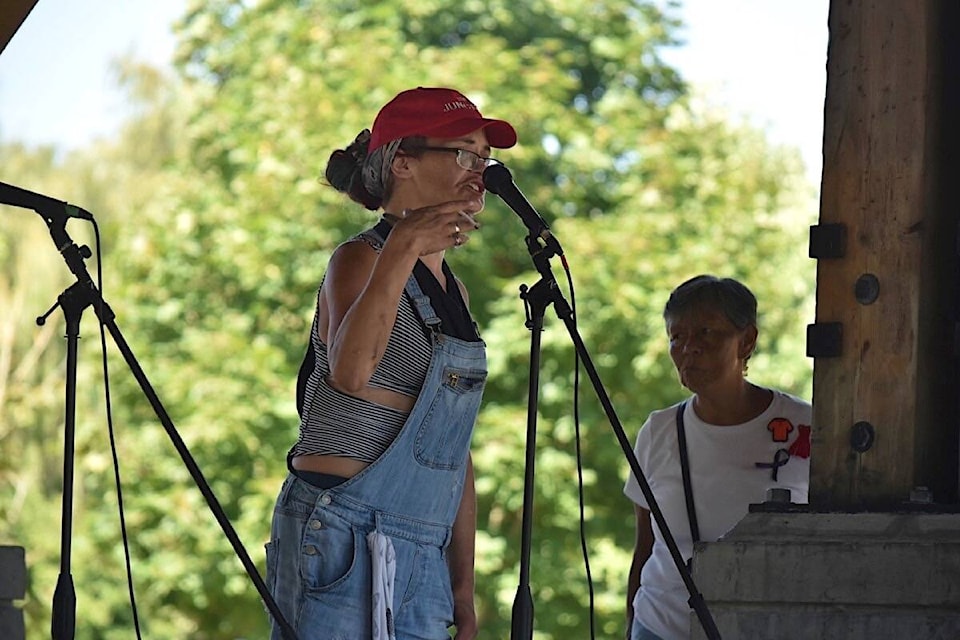Disclaimer: This story could be triggering for some individuals
The number of toxic drug-related deaths has continued to increase since 2016 when B.C. declared the issue a public health emergency. Last year in the Comox Valley, the number of suspected drug toxicity deaths more than doubled from 2020, says the Comox Valley Community Action Team (CAT).
The local chapter is one of 35 CATs in B.C. that focus on treatment, harm reduction, stigma reduction, and action-oriented strategies to respond to the needs of those most at risk.
Wednesday, Aug. 31 at Simms Park in Courtenay, Comox Valley CAT collaborated with several agencies to host an International Overdose Awareness Day event to remember loved ones, to learn about harm reduction and naloxone training, and to listen to heartfelt stories.
“There are beautiful sides to addiction,” a woman said from the Simms gazebo. “I shoot myself up with needles every day, and it doesn’t ruin me as a person. I bleed the same colour…I’m a product of my past, and it takes a community to raise a child. My community pulled me out of the sh*t, and that’s my story. I’m not sh*t, by the way.”
Numerous performers took to the stage during the four-hour event as people milled around the park that was dotted with informational booths, such as Tailgate Toolkit. This province-wide project aims to reduce the number of drug-poisoning deaths in the construction industry, and to increase access to harm reduction services and ideas for workers.
“Currently, our industry accounts for about one-fifth of all drug-poisoning deaths (in B.C.),” said Colby Young, harm reduction program lead. “We’re trying to shift the culture so that we can better understand what’s going on and support our team.”
Young notes the industry is male-dominated. He also notes substance use is highly stigmatized, so people tend to use alone.
“We want people to know how to be safer if they are going to use,” he said. “We try to educate industry members, and we have an industry-specific support group.”
Likewise, CATs are supporting peer-led projects that are reaching at-risk individuals who would otherwise not be accessing harm reduction, support services and life-saving human connection.
“Some of the Elders here, they really want to reach youth, and are very concerned that so many youth don’t have anybody, and they’re kind of lost,” said Shari Dunnet, Comox Valley CAT project co-ordinator. “Many of them don’t make it. I think there’s a real desire to be present and say, ‘I’m here.’”
Follow Comox Valley CAT on Facebook: facebook.com/comoxvalleycat
